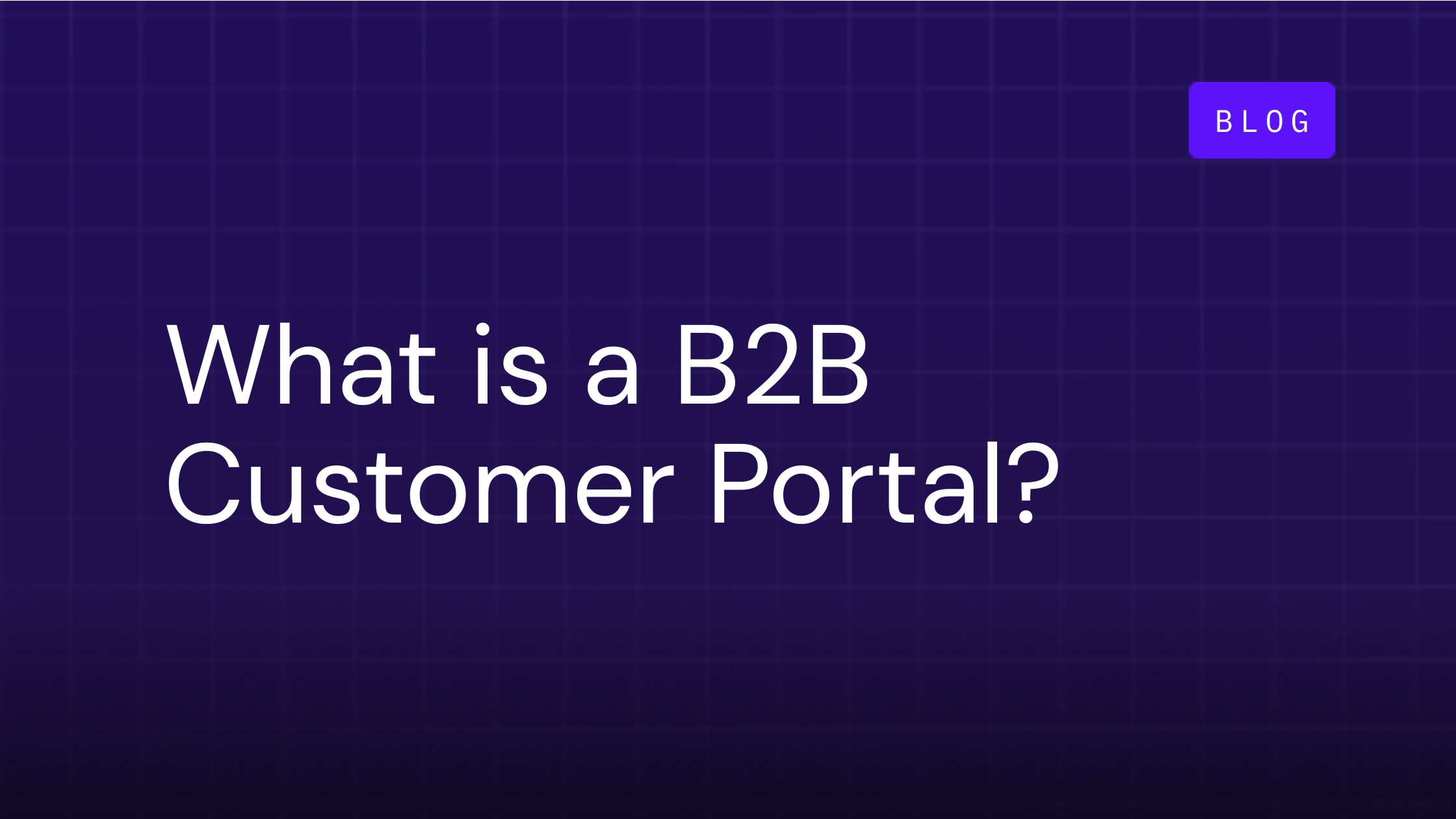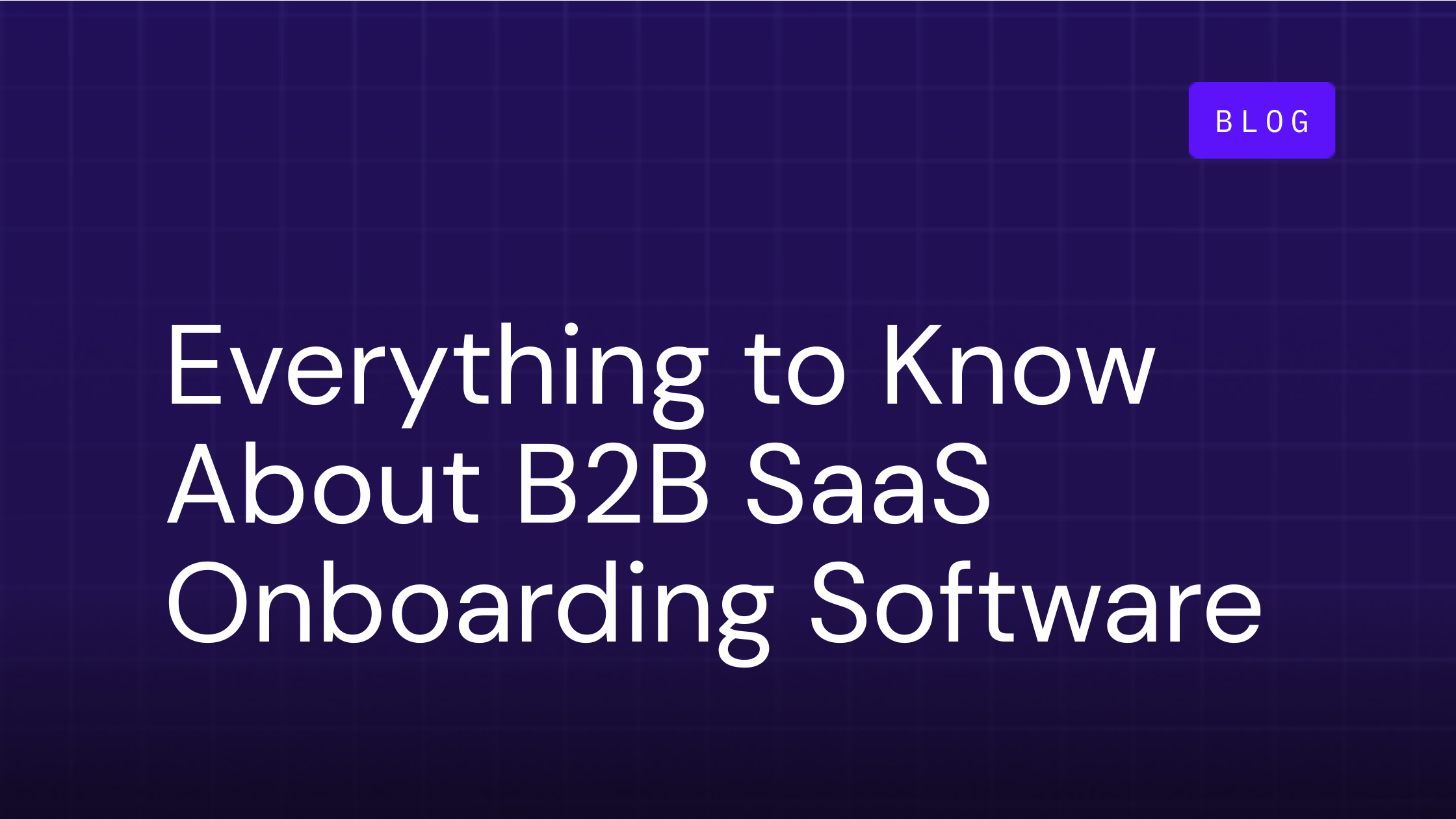Customer Onboarding Process Strategies to Drive ROI and Retention

Table of Contents
Customer onboarding is more than a handshake or a welcome email – it’s the first critical impression that defines your relationship with a new client. If your customer onboarding process feels disjointed, incomplete, or overly generic, you may be losing goodwill.
You’re also likely losing revenue and long-term loyalty. A well-defined, systematic onboarding approach isn’t just a “nice-to-have.” It’s the cornerstone of sustainable growth, retention, and satisfaction.
Consider this: companies with a seamless onboarding process experience improved customer retention rates. And increasing customer retention by only 5% can deliver increased profits of 25% to 95%.
Engaged customers spend 300% more per year, purchase 90% more frequently, and are five times more likely to choose your brand for a future purchase. A disorganized onboarding process can jeopardize these outcomes, undermining retention, satisfaction, and long-term success.
In this guide, we’ll break down the customer onboarding process into actionable stages. And we’ll explore the strategies that outshine competitors and exceed client expectations. Along the way, we’ll address common challenges, provide detailed recommendations for improvement, and highlight the tools that can help streamline your efforts.
What is a Customer Onboarding Process?
The new customer onboarding process is the journey of helping new customers recognize the value of your product or service. It begins the moment they sign up and continues until they feel confident using your solution. A well-designed onboarding process introduces key features, solves their initial challenges, and guides them toward achieving their goals.
Beyond these basics, a customer onboarding process is a systematic approach designed to:
- Understand the unique needs of your customers,
- Familiarize them with the tools and benefits of your product, and
- Ensure they feel empowered in their decision to partner with your business.
Reducing Time to Value (TTV) is a critical component of this process. A shorter TTV enhances customer satisfaction and retention by ensuring customers see immediate results. Conversely, a lengthy TTV can frustrate customers, increasing the likelihood of churn as they seek alternatives. By accelerating TTV, businesses not only improve satisfaction but also foster retention and long-term growth.
Tracking onboarding progress also plays a vital role. As highlighted in McKinsey’s research, companies that provide transparency boost customer satisfaction and simplify the journey. They achieve this through pricing clarity, ease of communication, and tracking onboarding status. Streamlining the onboarding process delivers value more quickly and effectively.
Key purposes of a robust client onboarding process include:
- Establishing trust and rapport: Build an open, communicative relationship.
- Demonstrating product functionality: Highlight benefits and practical applications.
- Understanding their needs: Uncover challenges or gaps your product can solve.
- Fostering excitement: Drive buy-in and enthusiasm for the journey ahead.
When done correctly, the onboarding process evolves from a service to become a strategic advantage for the brand.
7 Stages of the Customer Onboarding Process
While each client’s journey is unique, most client onboarding process flows follow a structure. Below, we outline the key customer onboarding stages and provide actionable insights to ensure success at each step:
1. Sales to Customer Success Handoff
Seamlessly transition from prospect to customer while preserving momentum.
A poorly executed handoff can result in misaligned expectations and erode trust early on. By prioritizing communication, you ensure a smooth start to the relationship.- Tip: Schedule a detailed handoff meeting where Sales and Customer Success teams share all relevant information, including customer goals, pain points, and expectations. Document everything in a shared CRM or collaborative tool to prevent knowledge silos.
- Quick Win: Create a standardized handoff template to streamline transitions. Include key data points like project timelines, stakeholders, and desired outcomes.
2. Pre-Onboarding Preparation
Lay the groundwork for a smooth onboarding experience.
This stage sets the stage for a positive experience. Gathering the right information and aligning teams early prevents delays and ensures efficiency.- Tip: Assemble necessary materials such as contracts, briefs, and use cases. Assign roles and responsibilities to internal and external stakeholders. Use project management tools to keep everyone on the same page.
- Quick Win: Send a pre-kickoff checklist to clients outlining prep work they need to complete. Include items like account setup instructions or required documentation.
3. Welcome Email
Set the tone with a warm, professional introduction.
A thoughtful welcome email makes customers feel valued and eager to begin the journey. It also provides clarity on what to expect next.- Tip: Include personalized elements such as team member introductions, a high-level overview of the onboarding plan, and links to key resources. Make it clear who their primary points of contact will be.
- Example: How to Write a Great Introductory Email to Customers
4. Kickoff Meetings
Align on goals and introduce the onboarding roadmap.
A kickoff meeting builds rapport and ensures everyone is aligned on objectives. It’s also a chance to set realistic expectations and demonstrate your commitment to the customer’s success.- Tip: Use this time to build rapport and clarify expectations,provide a tailored demo of key features, and confirm milestones, deliverables, and timelines.
- Quick Win: Share a kickoff agenda ahead of time to keep the meeting focused and productive.
5. Education and Training for Adoption
Empower users to maximize product value.
If customers don’t fully understand how to use your product, they won’t achieve their goals, leading to frustration and potential churn.- Tip: Offer a blend of self-serve resources (tutorials, videos, guides) and interactive sessions (webinars, workshops). Tailor these to different user roles to ensure relevance.
- Example: Provide a sandbox environment where users can practice without fear of making mistakes.
6. Engagement and Relationship Building
Foster trust and address emerging challenges.
Regular touchpoints during onboarding help customers feel supported and valued, creating a foundation for a long-term partnership.- Tip: Schedule regular check-ins to discuss progress and address any roadblocks. Use customer surveys to gather feedback and adjust your approach as needed.
- Quick Win: Host office hours or drop-in Q&A sessions for real-time support and deeper relationship-building.
- Example: Share personalized progress reports to celebrate early wins and reinforce value.
7. Evaluation and Optimization
Measure success and identify areas for improvement.
Without assessing your onboarding’s effectiveness, you miss opportunities to refine and deliver even better outcomes for future customers.- Tip: Use analytics to track key metrics like feature adoption, time to value, and customer satisfaction. Combine quantitative data with qualitative feedback for a well-rounded view.
- Quick Win: Conduct a post-onboarding survey to capture immediate impressions and identify quick improvements.
- Deep Dive: Use these insights to create an iterative improvement plan, ensuring each onboarding cycle is better than the last.
Tips to Improve Your Customer Onboarding Process
Want to elevate your client onboarding process flow? Here are actionable strategies to take your onboarding from adequate to exceptional:
Prioritize Simplicity and Clarity
Actionable Tip: Break complex workflows into bite-sized, digestible customer onboarding steps. Use plain language to explain each phase of the onboarding process, and provide visual aids like checklists, diagrams, or infographics to simplify understanding. Set clear expectations upfront by defining deliverables, timelines, and next steps during the first interactions.
- Example: Instead of overwhelming customers with a full product tutorial, create a step-by-step email series that introduces one core feature per message, with video links and use cases.
Personalize the Experience
Actionable Tip: Leverage customer data to tailor the onboarding process based on their specific needs, industry, and goals. During the kickoff meeting, ask targeted questions to uncover their priorities and challenges, then adapt the training materials accordingly. For high-value clients, offer a white-glove onboarding experience with one-on-one sessions and custom resource packages.
- Example: If onboarding clients in a healthcare SaaS, emphasize features that align with compliance and data security needs, while providing templates specific to their sector.
Proactive Communication
Actionable Tip: Maintain frequent, proactive communication throughout the onboarding journey. Anticipate potential blockers by identifying common pain points for similar clients and offering preemptive solutions. Create multiple touchpoints, such as weekly check-ins, milestone celebrations, and real-time support options.
- Example: Use automated check-ins to track customer progress and send reminders about pending tasks, paired with links to support resources or office hours.
Leverage Automation
Actionable Tip: Implement technology to automate repetitive tasks, freeing up time for high-value activities. Use customer portals to centralize key information, like account setup instructions, onboarding schedules, and FAQs. Set up automated alerts and milestone notifications to keep customers informed without manual follow-up.
- Example: Deploy an onboarding workflow tool that automatically triggers welcome emails, assigns training modules, and notifies the customer success team when a task is overdue.
Continuously Iterate and Improve
Actionable Tip: Regularly collect customer feedback through surveys, interviews, or reviews to identify bottlenecks and areas for improvement. Pair this feedback with data-driven insights from your onboarding analytics to create actionable updates. Pilot new ideas with small customer groups before rolling out broadly.
- Example: Use analytics to track how many customers complete your onboarding checklist and adjust the process if a specific step sees high drop-off rates.
How to Evaluate Your Customer Onboarding Process
Your new customer onboarding process is only as good as the results it delivers. To identify friction points and areas for improvement:
- Walk in your customer’s shoes: Experience the process firsthand to spot inefficiencies.
- Analyze drop-off points: Use analytics to track where engagement dips.
- Gather feedback: Conduct interviews or surveys with recent customers.
- Quick Win: Create a visual map of your onboarding journey to pinpoint bottlenecks.
Overcoming Common Onboarding Challenges
Challenges are inevitable, but the right strategies can mitigate them:
- Overwhelming Customers: Simplify tasks with consolidated tracking sheets and single points of contact.
- Team Misalignment: Improve collaboration with shared tools and defined handoff processes.
- Resource Constraints: Outsource documentation or training materials and implement scalable solutions.
- Adoption Resistance: Clearly communicate value and offer hands-on support tailored to individual use cases.
Bringing Onboarding to the Boardroom: Securing Buy-In for Improvement
Improving your customer onboarding process doesn’t just benefit the customer – it drives measurable ROI for your entire organization. To secure buy-in from leadership and other teams, it’s crucial to connect onboarding improvements to broader business goals and demonstrate their impact with clear, compelling data. Here’s how to make your case:
- Highlight the Financial Impact: Use metrics like customer retention rates and time-to-value (TTV) to quantify the financial benefits of a streamlined onboarding process.
- Link Onboarding to Long-Term Success: Emphasize how onboarding sets the tone for the customer lifecycle. A stronger start means higher satisfaction, greater product adoption, and increased upsell opportunities.
- Use Customer Stories to Illustrate Value: Share testimonials or success stories from customers who thrived because of an effective onboarding process.
- Propose Scalable Solutions: Show how investments in automation or onboarding tools can reduce manual effort and deliver consistent outcomes.
- Present the Competitive Edge: Position onboarding improvements as a way to differentiate your company in the market, offering a seamless experience that competitors can’t match.
- Create a Pilot Program: Suggest a small-scale onboarding initiative to demonstrate quick wins and provide data to strengthen your case.
- Collaborate Across Teams: Involve key stakeholders from sales, customer success, and operations. Cross-functional alignment reinforces the strategic importance of onboarding a customer and ensures broad support.
Tools and Technologies to Enhance Customer Onboarding
Stop relying on disjointed email chains, manual spreadsheets, Slack pings, and the occasional PowerPoint deck. Modern customer onboarding software centralizes processes, improving efficiency and visibility. Key features to consider:
- Automated task triggers and alerts.
- Branded customer portals for clear communication.
- Analytics to track progress and account health.
Example: OnRamp’s centralized onboarding solution combines all these features, helping teams collaborate seamlessly while keeping customer needs front and center.
Measuring the Success of Your Client Onboarding Process
To determine if your onboarding new clients process is effective, monitor the KPIs that tie directly to onboarding outcomes. Let’s examine each metric, how it relates to onboarding, and actionable ways to measure success:
Customer Satisfaction Score (CSAT)
CSAT reflects how satisfied customers are immediately after onboarding. A well-executed onboarding process ensures that customers feel supported, informed, and valued, boosting satisfaction levels.
Actionable Tip: Send a CSAT survey immediately after onboarding is completed. Include questions about their experience with training, clarity of resources, and support availability.
Benchmark: Aim for a CSAT score of 80% or higher, depending on your industry.
Net Promoter Score (NPS)
NPS gauges whether customers would recommend your product to others, reflecting their confidence in your solution and satisfaction with the onboarding process.
Actionable Tip: Capture NPS data a few weeks after onboarding to allow customers time to engage with your product. Include a follow-up question asking why they gave their score, as this will provide actionable insights.
Benchmark: Bain & Company, creators of NPS, concluded the following:
- Above 0 is good,
- Above 20 is favorable,
- Above 50 is excellent,
- Above 80 is world-class.
Targeting an NPS above 20 is a reasonable starting point for most businesses, with a goal to reach 50 or higher over time.
Product Adoption Rates
Track how effectively customers are engaging with core features during onboarding. High adoption rates indicate that onboarding successfully communicated the product’s value and utility.
Actionable Tip: Use product analytics tools to track which features customers interact with most during the first 30 days. Pair this data with qualitative feedback to address obstacles to adoption.
Benchmark: Aim for 60%-70% adoption of key features within the first month, with steady growth over time.
Retention Rates
Retention is directly impacted by the onboarding experience. Customers who achieve their goals quickly during onboarding are more likely to remain loyal.
Actionable Tip: Measure retention rates at specific intervals, such as 30, 60, and 90 days post-onboarding. Identify common patterns in accounts that churn early and refine onboarding to address those issues.
Benchmark: Industry retention rates vary, but achieving 80% retention after the first 90 days is a strong target.
Upsells and Expansions
Upsells and expansions are a sign that customers are realizing value from your product. Onboarding lays the foundation by ensuring customers know how to maximize benefits and meet their goals.
Actionable Tip: Track repeat upsells over 6-12 months post-onboarding. Use CRM tools to monitor patterns and identify upsell or cross-sell opportunities linked to onboarding success.
Benchmark: Aim for a 10%-20% increase in repeat purchase rates compared to customers with subpar onboarding experiences.
Next Steps: Start Optimizing Your Onboarding Process
By refining your B2B customer onboarding process, you’ll set the stage for long-term success. Start small: map out your current onboarding journey, identify areas where customers might face friction, and gather feedback from recent clients. These simple actions can uncover valuable opportunities for growth and improvement.
Melissa Scatena is a customer onboarding expert and marketing professional at OnRamp, where she creates content and events focused on helping customer success teams thrive. She’s passionate about making complex processes simple and delivering exceptional customer experiences.
Related Posts:

What is a B2B Customer Portal?
Customer relationships matter. It's that simple. Research shows that 59% of people will walk away from a brand after several bad...

The Future of CS: 2025 Customer Success Trends and Predictions
Acquiring new customers in 2025 looks different than what you've been doing. The flood of competitors in SaaS and outdated marketing...

Everything You Need to Know About B2B SaaS Onboarding Software
The global SaaS market is booming, with experts predicting it will reach a staggering $1.016 trillion by 2032. However, one critical...